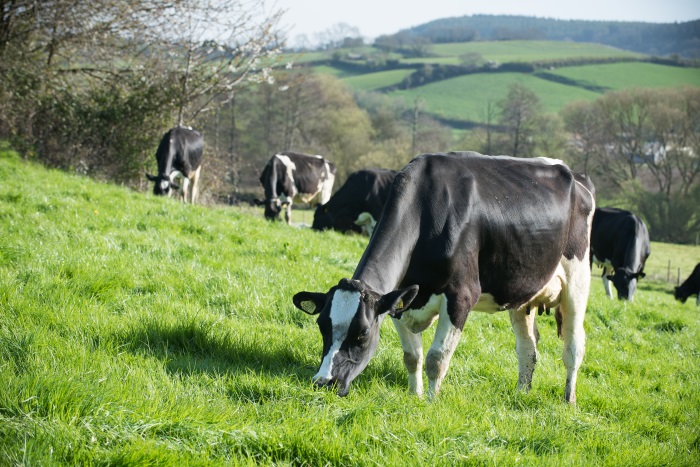A first generation sheep farmer from Helston, Cornwall is the latest recruit to Grass into Gold – a nationwide initiative exploring the benefits that proactive grassland management can have on forage quality. Steve Penberthy, who farms at Trewithick – a 500-year old tenant farm on the south Cornish coast – is working closely with the team at Barenbrug UK, the company behind Grass into Gold.
Steve, who sells his lamb under the name of The Cornish Lamb Company, is liaising with Latham Gibbins, Barenbrug’s grass expert in the south west of England. Together, Steve and Latham will assess forage quality at Trewithick, looking at influencing factors including grass and brassica species and utilisation; soil and prevailing weather conditions; plus common weeds and pests. They’ll then devise a tailor-made plan of action for improving the quality and utilisation of the forage crop
Specifically, Steve and Latham are going to try to extend the quality of winter forage at Trewithick by using a split of brassicas, which is two thirds Barabus turnip and one third Barcoli rape. With different maturity dates, this balance of planting can help ensure consistent feed levels – with the rape maturing just as the turnips are grazed off.
Trewithick is an all-grass farm so the brassica rotation helps with sward establishment. The farm’s fields need to produce enough forage – grazed in situ – to sustain a 300-strong flock, which includes Poll Dorset, Pedigree Lleyn and Highlander ewes. With each breed lambing at a different time of year, there is no room for error in Steve’s grassland planning.
Explaining more, Steve said: “We pride ourselves on the quality of our lambs, which we sell to local chefs and the general public. For our customers, it’s all about provenance and the fact that our lambs are 100% grass- and brassica- fed. They want to buy local meat from animals that have been well looked after and given the best possible diet. Across the food and farming sector, there is a real shift towards 100% forage-fed meat. Producers, buyers and customers are waking up to the benefits of grass and its’ impact on meat taste and quality.”
“At Trewithick, our breed mix means we have to work incredibly hard to guarantee a constant supply of feed from our 100 acres. Demand is high throughout the year with our Dorset ewes lambing in December; the Lleyns producing in February; and our Highlanders lambing in April. When it comes to grass, we are doing pretty well and don’t need to use any feed concentrates – but I’m sure there’s more we could be doing. I look forward to working with Latham and the Barenbrug team to gain a fresh perspective on our grass and what we could be doing differently with brassicas.”
Latham said: “In a set up like Steve’s, careful decision making is key and it’s essential that all the right elements are in place. As well as using quality grass and brassica varieties that are persistent, proven to produce, and which sheep and lambs love, all other aspects of good grassland management need to be optimised for success. At the moment, Steve reseeds every two to five years, which is ideal, so our focus will be on other grass-related aspects. As well as assessing brassica usage, we’ll be looking at how to tackle common grass problems such as crown rust; how to manage clover levels; and adjusting stocking rates according to variety to stop it getting too stemmy.”


